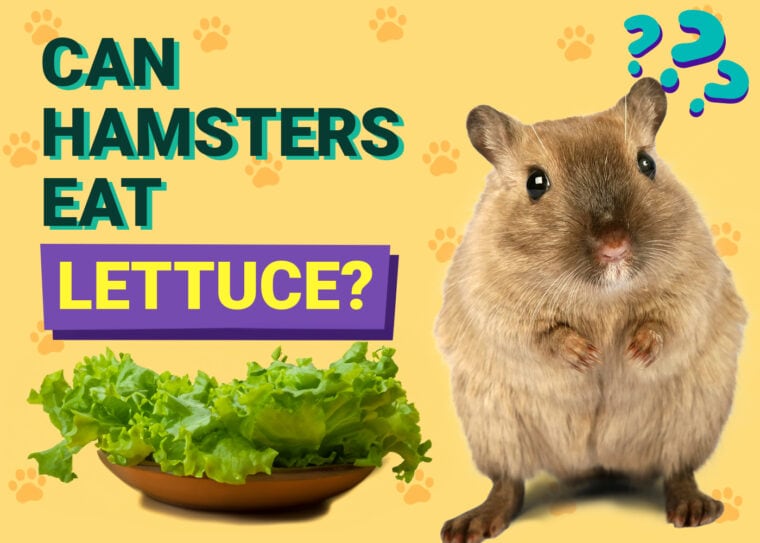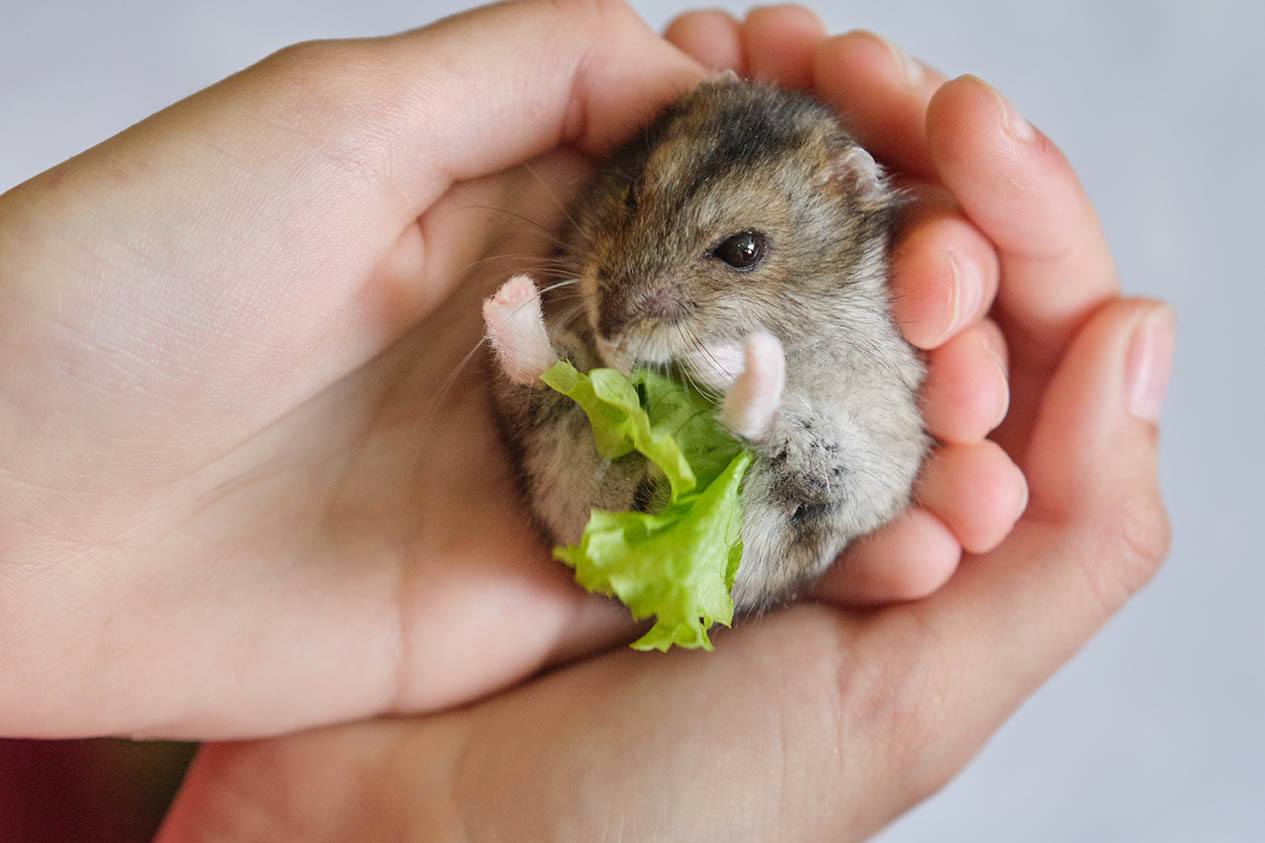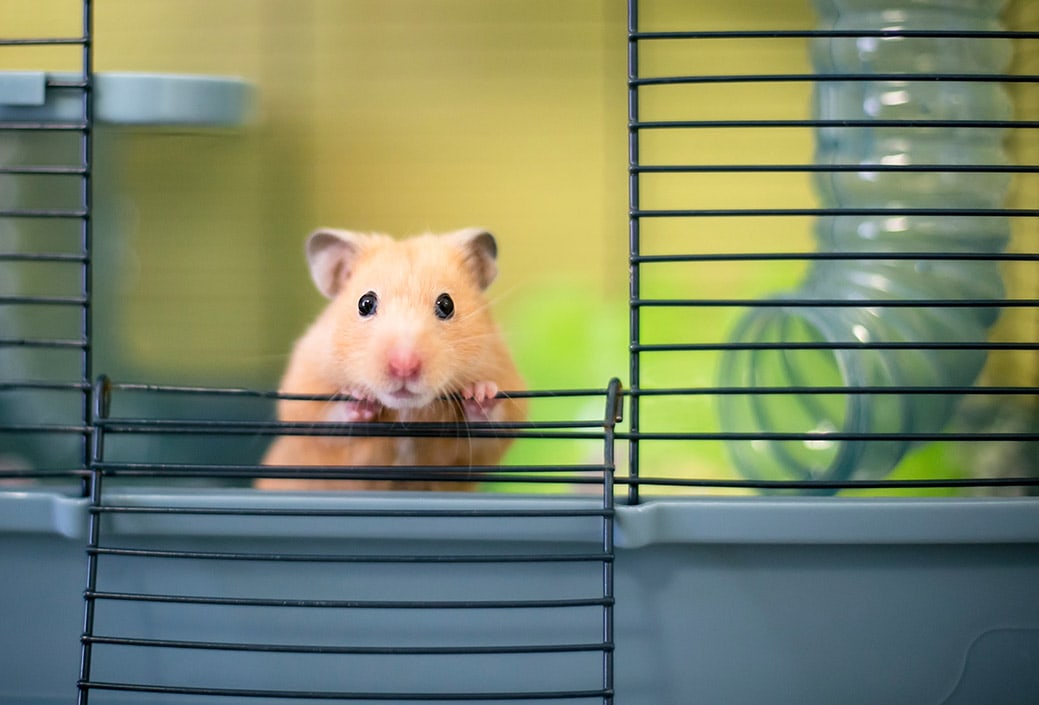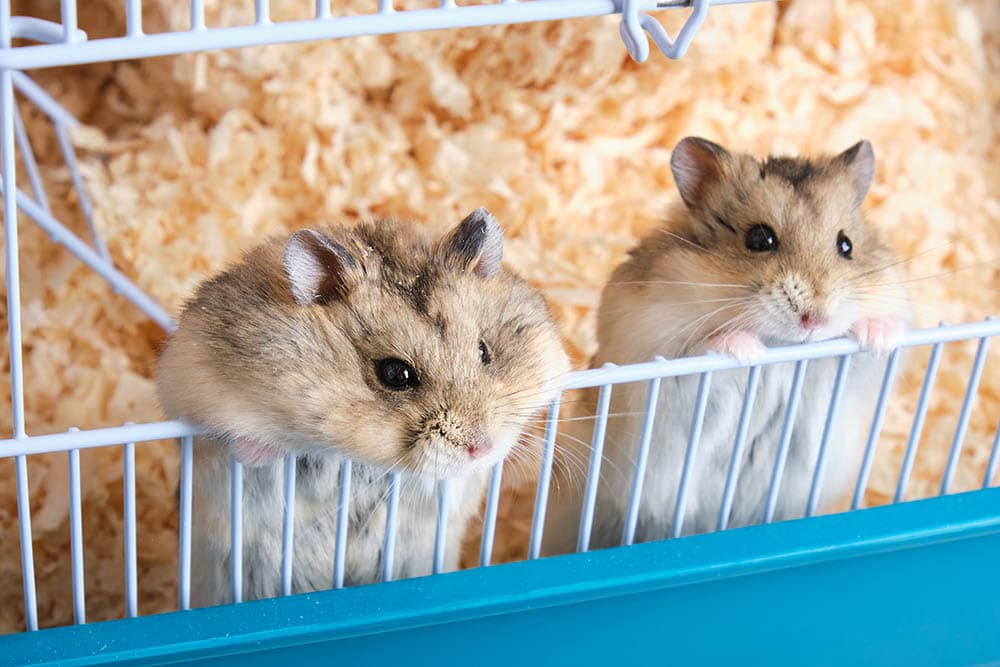
If you own a hamster, you might already know that they love eating vegetables in addition to their regular food. Veggies can be a great source of vitamins and nutrients for your hammy, as long as you only choose ones that are safe for them to eat.
If you have leftover lettuce, is it safe for your hamster to eat? We’ll get into the details in a moment, but in short, yes, most lettuce is safe for your hamster to eat.
What Is Good About Lettuce?
Most varieties of lettuce contain a large amount of water and relatively low amounts of nutrients compared to other leafy green vegetables.
But lettuce does contain vitamins and several minerals that can be beneficial to a hamster’s health. Different variants of lettuce offer different amounts of nutrition. Popular lettuce types and their nutritional information are as follows.
Lettuce variants contain other minerals and vitamins. For hamsters, their exact requirements of vitamins and minerals has not been established yet, but deficiencies have been noticed when certain nutrients are missing in their diet. Excessive amounts of minerals and vitamins might also be detrimental. For example, too much calcium has been linked to dental issues in hamsters.
While vitamin C is essential for humans and pets like guinea pigs, it isn’t considered essential for hamsters because they can make their own. However, vitamin C is useful for a hamster during periods of stress or illness. In experimental studies, hamsters given vitamin C supplementation had better growth than hamsters that were deprived of it, even though the deprived group did not show signs of deficiencies or scurvy.

What Is Bad About Lettuce?
Lettuce isn’t toxic to hamsters, but it certainly doesn’t contain as many nutrients as other vegetables that you might choose to feed your hammy.
Some lettuce is sprayed with chemicals, including pesticides. As hamsters are so small, even a tiny amount of these chemicals can have a bad effect on their health. It’s always best to thoroughly wash any leaves before you feed them to your hamster or feed them organic lettuce.
Too much lettuce can cause diarrhea for your hamster due to the high water content. So, if you are going to feed lettuce to your hamster, make sure it’s only a very small amount.
Lettuce contains carbohydrates in the form of sugars. In hamsters, excess forms of certain sugars (such as fructose, sucrose, and glucose) have been associated with health issues, including mortality. Therefore, moderation is essential when feeding lettuce to your hamster. This adds appeal to iceberg lettuce, as it is lower in carbohydrates than other forms of lettuce. However, it is also low in other nutrients.

What Types of Lettuce Are Best?
Dark green or red lettuce varieties, like romaine and butter crunch, are good choices to offer your hamster. These have higher levels of vitamins and minerals than some other varieties of lettuce.
While iceberg lettuce contains more water content than other forms of lettuce, it tends to have fewer amounts of other nutrients. It isn’t toxic, though, and as a treat, it is acceptable for a hamster.
How to Feed Lettuce to Your Hamster
As with any new food, you should introduce lettuce to your hamster’s diet very slowly, to make sure they don’t suffer from any adverse effects.
A small piece of lettuce, enough to cover the size of a teaspoon, will be enough. Monitor your hamster carefully over the 48 hours after they’ve eaten this, to make sure they’re not suffering from any reaction.
If your hamster develops loose stools, won’t eat their other food, or appears lethargic, then it’s probably not a good idea to feed them any more lettuce.
If your hamster has diarrhea, you should not attempt to rehydrate them with plain water, as this will make things worse. You should seek a product made specifically for rehydrating hamsters. This is available from your pet store or veterinarian.
Diarrhea in hamsters should not be taken lightly, and if you notice diarrhea in your hamster, you should seek prompt professional care for them.
If they seem to tolerate the lettuce fine, you can incorporate lettuce into their diet. A Syrian hamster could eat around a teaspoon-sized piece of a lettuce leaf once a week at the most. You may decide to split this ration into smaller portions. A smaller dwarf hamster shouldn’t have more than a half-teaspoon-sized leaf per week.
Overall, hamsters can have around 1 teaspoon of vegetables per day, but you should work up to this amount slowly. Make sure the veggies are well washed, and regularly check your hamster’s cage to check that they haven’t stored away anything that may rot. We recommend starting with more nutritional vegetables and only add lettuce if your hamster seems to enjoy it. It’s also best to offer your hamster variety with their diet, as the same greens fed consistently can lead to health problems.

A Balanced Diet
Most of your hamster’s nutrition should come from their pelleted or mixed food. Fruit and vegetables can be fed as a supplement but should never be used as the primary source of vitamins and minerals. If your hamster seems to enjoy eating a small amount of lettuce, then they can have this as part of their ration of vegetables.
Other vegetables contain more nutrition than lettuce, so you may want to feed these to your hamster first and offer them lettuce as a second course! Vegetables that are safe for them include:
Final Thoughts
Hamsters can safely eat lettuce, but it doesn’t contain any nutrients that they can’t get from other vegetables or their pelleted hamster food. If you do decide to feed lettuce to your hamster, start feeding them a very small amount, and check that they don’t suffer from any adverse effects. Don’t be tempted to overfeed them either; just because your hamster might like to eat half a leaf of lettuce in one go doesn’t mean you should let them!
Fruits and vegetables are a great way to add interest and variety to your hamster’s diet, but they should never be fed as a way to provide nutrition. Instead, buy the best-quality hamster food and hay that you can, and serve a small amount of vegetables as a tasty treat. Always wash and peel the vegetables when necessary, to remove any traces of pesticides.
If your hamster suffers from diarrhea or appears otherwise unwell after eating lettuce, stop feeding this veggie and consult your vet. Some hamsters love lettuce, but there are plenty of other more nutritious vegetables that they might love just as much!
Featured Image Credit: Ekaterina Pokrovskaya, Shutterstock









